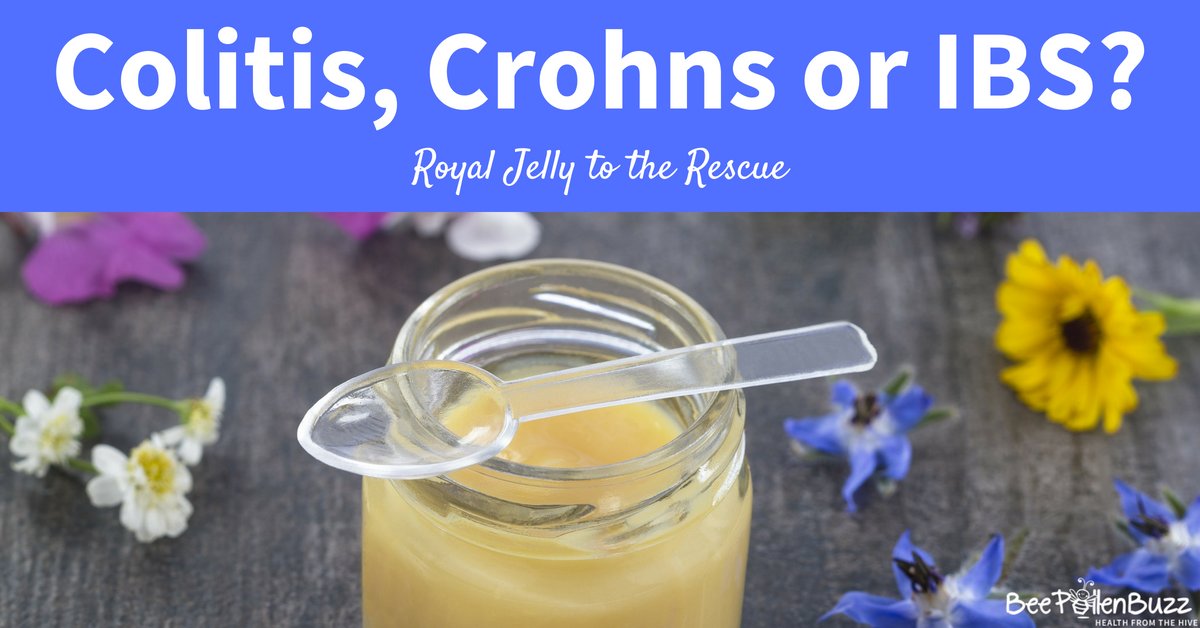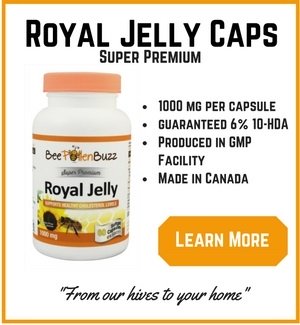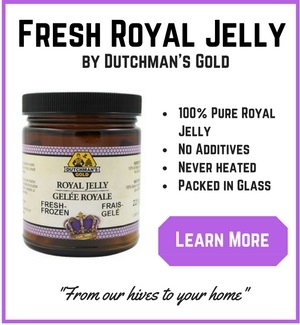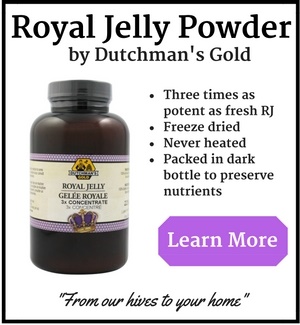Royal Jelly Helps Colitis, Crohn's Disease and IBS in Study

Protecting and healing the damaged lining of your gut possible with royal jelly says European study
by Angela Van Alten, Nutritionist and Beekeeper's Daughter

A recent study now suggests using royal jelly for colitis, a painful and hugely disruptive inflammatory bowel disease. Colitis and other conditions of the G.I. tract like Crohn's Disease and Irritable Bowel Syndrome are becoming more and more common today due to the increased consumption of processed, refined foods and exposure to toxins in the environment.
Standard medical treatment for any inflammatory conditions of the bowel or large intestine is limited to either anti-inflammatory's or steroids, both of which have undesirable side effects and provide virtually no hope for the elimination of the condition. They merely attempt to manage the symptoms. Natural, alternative treatments are badly needed as this condition is expected to increase in numbers over the coming years as more and more processed, refined foods are consumed around the world.
The Study
This study investigated the effects of royal jelly on colitis in rats.
Twenty rats were divided into several treatment groups of 5 animals each. The group of rats without colitis was given Royal Jelly orally (150 mg per kg of body weight). Another group, which had colitis, was treated orally with Royal Jelly (150 mg per kilogram of body weight) for 4 weeks.
What the researchers found was that Royal Jelly protected the mucosa (the delicate lining of the colon) by limiting the effects of the acidic substance they administered to the rats to their digestive tracts. What is interesting about this is that many of the highly refined foods we consume are acidic in nature and cause similar damage to our intestinal tracts.
Royal Jelly also protected against 'erosion' of the colon cells. Over time, an unhealthy diet will literally wipe out the lining of your gut and bowels, leading to colitis and IBS. Royal Jelly slowed this process down and literally protected the gut and bowel from this occurring.
With the doses used in this study, a 140 pound human would need to take approximately 10 grams of royal jelly per day to achieve similar results. This would equate to 2 teaspoons of a freeze dried Royal Jelly powder or 2 tablespoons of fresh Royal Jelly.
Recommended Treatment Protocol for Colitis and IBS
- Consume a multi-strain probiotic daily with minimum of 15 billion active bacteria. I recommend 50 billion plus during flare ups.
- Consume 1 - 2 servings of collagen protein per day. Collagen heals the gut lining.
- Eliminate all refined foods and drinks from your diet. Implement a Paleo based nutrition plan. Doing this is the most important thing you can do.
- Consume 3000 mg's or more of Omega Fatty Acids from fish oil
- Drink only reverse osmosis water or distilled with minerals added back into the water post filtration
- Eliminate all gluten and grains (as per Paleo diet)
- Take several grams of royal jelly per day. Do so only after building up gradually to the higher doses.
References:
European Journal of Histochemistry, October 2010.
|
|
|














New! Comments
Do you have something to say about what you just read! Leave me a comment in the box below. I'd love to hear from you!